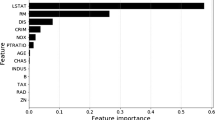Abstract
In linear regression models weights are usually employed within the framework of generalized least squares (GLS) to deal with heteroscedastic errors. In this paper some aspects of estimation and inference are addressed when the weights are used to give the observations different fixed weights in the estimation process of the parameters while the assumption of spherical (i.e. independent and identically normal distributed) disturbances is maintained. Here, this model is referred to as weighted linear regression (WLR) model. Applications of WLR-type models are discounted least squares, a standard procedure in time series forecasting, geographically weighted regression and local regression. For WLR-models the covariance matrix of the estimated coefficients is substantially different in comparison to the GLS-case in terms of the structure of the unscaled covariance matrix and in terms of the error variance estimator. The expressions valid for the GLS-case are not appropriate in the framework considered here and in fact their application is strongly misleading. The results of a simulation study suggest that in most instances the common distributions can be used as approximations for inferential purposes within the WLR-framework. The results derived in this paper will not only provide new inferential procedures for the mentioned applications but may be also beneficial in other applications as well. The usefulness of the approach is demonstrated by a real data example.








Similar content being viewed by others
References
Box GE, Jenkins GM, Reinsel GC (2008) Time series analysis: forecasting and control, 4th edn. Wiley, Hoboken, NY
Brunsdon C, Fotheringham AS, Charlton ME (1996) Geographically weighted regression: a method for exploring spatial nonstationarity. Geogr Anal 28(4):281–298
Brunsdon C, Fotheringham S, Charlton M (1998) Geographically weighted regression. J R Stat Soc Ser D 47(3):431–443
Cleveland WS (1979) Robust locally weighted regression and smoothing scatterplots. J Am Stat Assoc 74(368):829–836
Cleveland WS, Devlin SJ (1988) Locally weighted regression: an approach to regression analysis by local fitting. J Am Stat Assoc 83(403):596–610
Cleveland WS, Grosse E, Shyu WM (1992) Local regression models. In: Chambers JM, Hastie TJ (eds) Statistical models in S. Chapman & Hall, London, pp 309–376
Duffin R, Schmidt TW (1960) An extrapolator and scrutator. J Math Anal Appl 1(2):215–227
Fotheringham AS, Brunsdon C, Charlton M (2003) Geographically weighted regression: the analysis of spatially varying relationships. Wiley, Hoboken
Greene WH (2003) Econometric analysis, 5th edn. Prentice Hall, Upper Saddle River
Harris P, Fotheringham AS, Juggins S (2010) Robust geographically weighted regression: a technique for quantifying spatial relationships between freshwater acidification critical loads and catchment attributes. Ann Assoc Am Geogr 100(2):286–306
Harris P, Brunsdon C, Fotheringham AS (2011) Links, comparisons and extensions of the geographically weighted regression model when used as a spatial predictor. Stoch Environ Res Risk Assess 25(2):123–138
Loader C (1999) Local regression and likelihood, vol 47. Springer, New York
Montgomery DC, Jennings CL, Kulahci M (2008) Introduction to time series analysis and forecasting. Wiley, Hoboken
Park CG, Kim I, Lee YS (2012) Error variance estimation via least squares for small sample nonparametric regression. J Stat Plan Inference 142(8):2369–2385
R Core Team (2014) R: a language and environment for statistical computing. R Foundation for Statistical Computing, Vienna, Austria. http://www.R-project.org/
Romano JP, Wolf M (2014) Resurrecting weighted least squares. University of Zurich, Department of Economics, Working Paper No 172
Ruppert D, Wand MP, Carroll RJ (2003) Semiparametric regression. Cambridge University Press, Cambridge
Tong T, Wang Y (2005) Estimating residual variance in nonparametric regression using least squares. Biometrika 92(4):821–830
Wand M (2014) SemiPar: semiparametic regression. http://CRAN.R-project.org/package=SemiPar, R package version 1.0-4.1
Acknowledgments
The author would like to thank the associate editor and three anonymous referees for comments and suggestions that helped to improve the quality of the manuscript.
Author information
Authors and Affiliations
Corresponding author
Electronic supplementary material
Below is the link to the electronic supplementary material.
Rights and permissions
About this article
Cite this article
Meermeyer, M. Weighted linear regression models with fixed weights and spherical disturbances. Comput Stat 30, 929–955 (2015). https://doi.org/10.1007/s00180-015-0572-z
Received:
Accepted:
Published:
Issue Date:
DOI: https://doi.org/10.1007/s00180-015-0572-z




